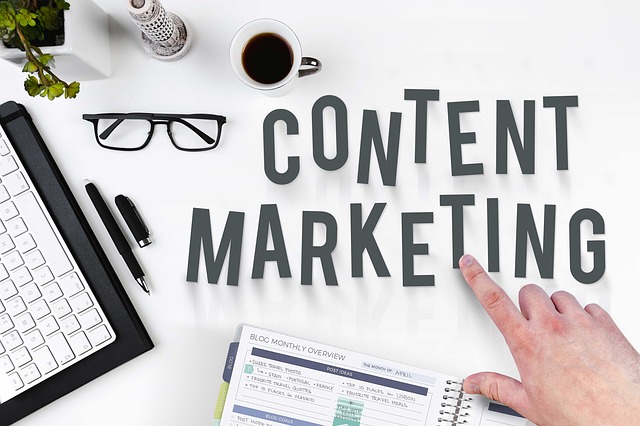
5 Easy Steps to Building Better Content Experiences *
Content Drives Your Marketing
Content is the driving force behind all of your most effective marketing strategies. Content drives your lead generation, inbound marketing, and sales enablement. As marketers personalize how their prospects and target accounts experience their content, creating these content experiences become your next big hurdle.
It doesn’t have to be a burden. By planning and up front preparation you will make the creation and scalability of personalized experiences for your marketing strategies and campaigns painless. You might even have fun doing it.
What is a Content Experience?
A content experience is the environment in which your content lives, how it’s structured, and how it compels your prospects and customers to engage with your company.
The Content Experience Framework developed by Uberflip provides a measurable approach to creating personalized content for any stage of the buyer journey. The framework outlines five easy steps to help build your content.

The Framework helps you focus, align your team, and deliver meaningful experiences so you can rock your inbound, ABM, demand generation, and sales enablement programs!
Whether you have a content experience platform to help you do it, or you manage it with separate tools, spreadsheets, and serious hacking skills, the concepts remain the same.
Centralize Your Content
Before you can build out content experiences, you need to take stock of all the content you have. There’s a scary statistic floating around the internet that says between 60 and 70 percent of content in B2B companies sits unused. Why?
The truth is that marketers simply can’t keep track of it all. They have content all over the web; on their blog, their social channels, hosted on other platforms, but also on zip drives, in folders, and saved locally.
Centralizing your content allows you to bring all of your content into one central location and deliver it across multiple channels. It also helps you establish version control and ensure everyone is using only marketing-approved content.
Organize and Audit Your Content
Once you have all of your content in one place, the next step is to organize it. What are your topics? Who are your personas? Will you organize content by stage of the funnel? And what kind of content do you have.
Auditing your content is a must-do at this stage. You have to find out what you have, and then tag or label your content by topic, persona, account, or funnel stage so you can easily find it, decide how you will use it, and how it will be shared in a personalized manner. Auditing your content will also show you any gaps you need to fill.
Once labeled, your content can be categorized for easy discoverability on the front-end using the top navigation and on the back-end through either a spreadsheet or using technology. This will allow you to quickly and easily build personalized experiences at any time.
Finally, before you move to step three, be sure to define what content should be recommended. This can be done using the categories and tags you just created.
A content experience platform can help you do this, or you can simply add another column in your audit spreadsheet. For the more advanced, decision trees, and artificial intelligence can be leveraged to determine what to recommend to whom and when.
Personalize Your Experiences
Now, most people would jump right into distributing their content. However, personalizing your experiences is an important next step. Creating a personalized content experience will impact how your customers move through the buyer journey. More importantly, it will define how they view your brand.
You laid the groundwork for this in the first two steps. Now the real fun begins! You can create collections of content and design your experiences around them. That way your target audience can engage with content in different formats in one purposed experience.
Some examples include a destination for your email engagement campaigns, or a knowledge base for your customers.
To make it truly personalized, you’ll need to include tailored messaging, custom images and branding, and contextual Call To Actions. These all work together to make your experience richer and more engaging for your prospects, customers, and target accounts.
Distribute Your Content
Now that you’ve created your content experiences, it’s time to put them into action. You probably will be marketing them across your different distribution channels. How do you do this?
The experience you created will have a unique URL and your distribution tactics such as email, organic, social, paid advertising, direct mail, etc. will lead them back to that experience.
Your experiences should be mapped to cover each stage of the buyer journey and distributed across the channels that best complement them.
If the buyer is at the awareness stage and you’re taking an account-based marketing approach you might try a mix of paid ads and direct mail. Or if inbound marketing is your focus then organic marketing and social media might be your best way in.
Generate Results
Well, it’s time for the grand finale. Step five is where we harvest what we’ve put into building our experiences. Because after all, this isn’t just about having a great brand, it’s about driving business results.
Putting the right finishing touches on your personalized experiences will allow you to generate the results you want. Things like:
By leveraging marketing analytics and , you can capture leads, score your leads based on engagement, and get actionable insights. You’ll also find you have the ability to maximize the results you see because engagement is contained within this one experience.
As you begin to focus on your content’s environment, structure, and how your audience engages with it. You’ll see your content reach its full potential and perform the way it was intended. Then it will prove the ROI of your content marketing. That’s the power of focusing on the content experience.
Now that you know the best way to build personalized content experiences, find out what kind of results you can expect. How have your content marketing experiences helped you?
